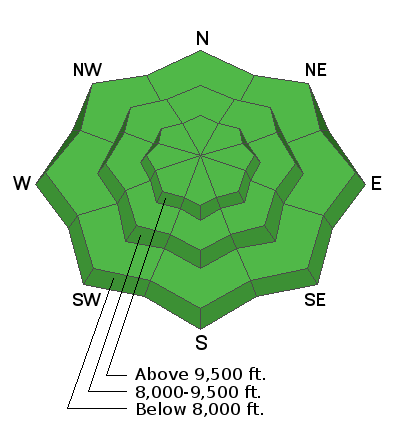As a closed low spins over Las Vegas, northern Utah might see some residual wrap-around moisture this morning that could bring a trace to a few inches of new snow. This storm will be short-lived for us as it quickly clears out this afternoon. This morning the winds will blow from the southeast, and as the storm moves off into Colorado, the winds will later switch to the northwest. As the storm exits the stadium, we quickly dry out, heading into the weekend with the return of spring and plenty of sunshine Friday into Saturday. The good news: It seems there is a change in the pattern setting up for early next week as the storm track becomes more progressive and a series of troughs take shape.
This morning the current mountain temperatures are in the 18-25 °F range above about 8,500'. Southeast winds blow and are spinning anemometers 10-20 mph with gusts into the 20's and 30's at the upper elevation ridgelines. The snow surface has taken a beating over the past few days, with much of the terrain now sunbaked, and this morning will be crusted. Dry, soft, settled powder snow can still be found at the mid and upper elevation north-facing terrain.
Under yesterday's strong sunshine and warm temperatures, the new snow became wet and produced some small loose wet avalanches. Otherwise, no major avalanche activity was reported from the backcountry.






